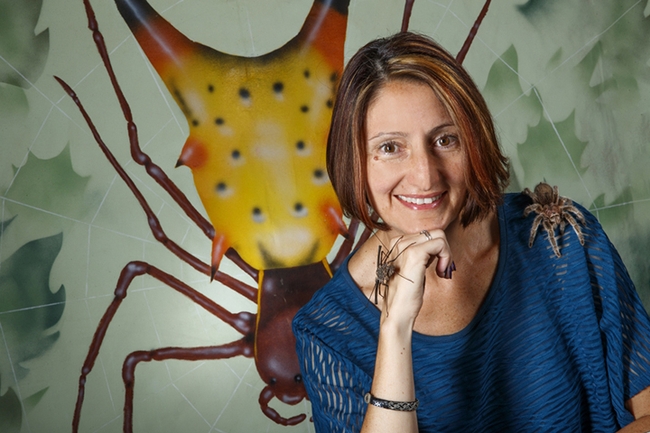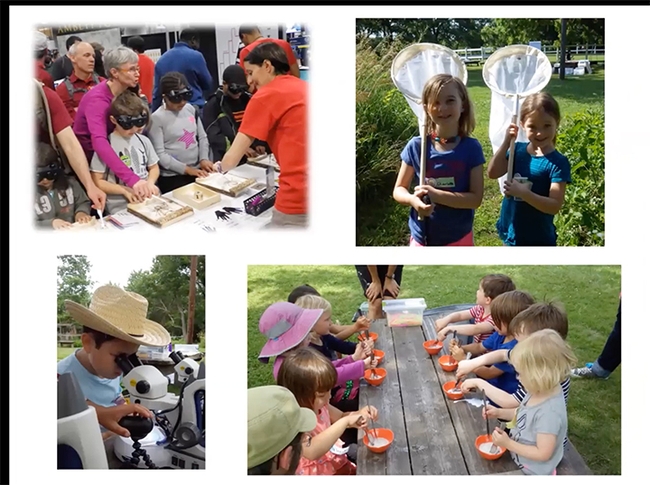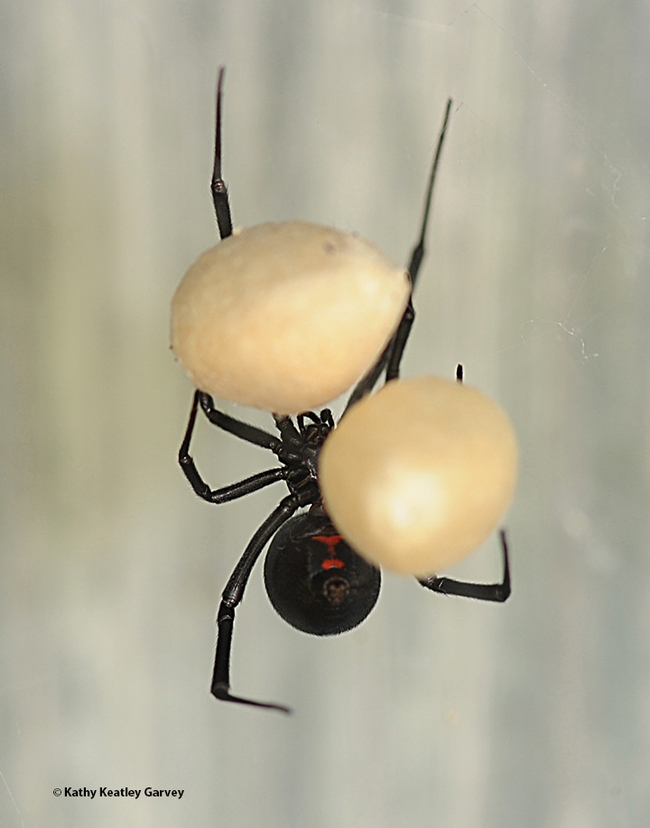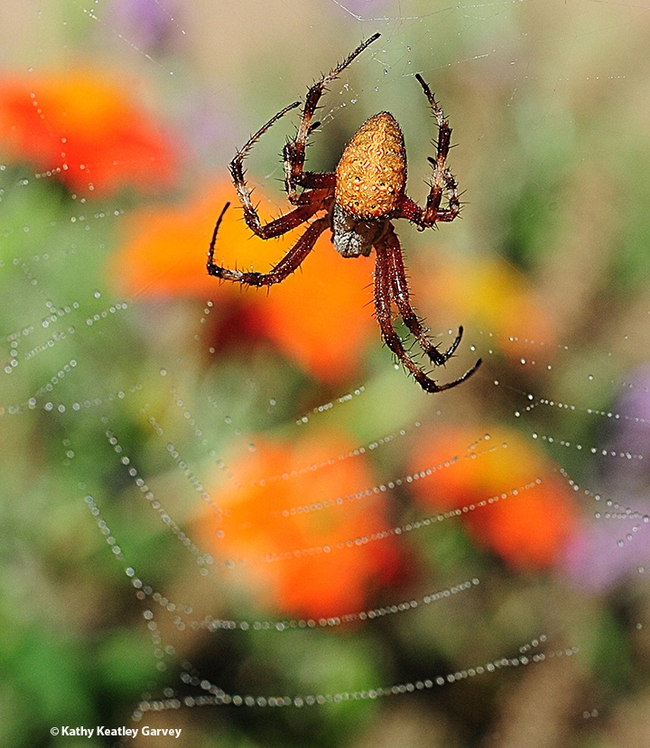- Author: Kathy Keatley Garvey
A sneak peak at a couple of Solano County Fair entries...think insects!
The COVID-19 pandemic derailed fairs and festivals, but now they're back on track.
Take the 73rd annual Solano County Fair, themed "Bales of Fun." Located at 900 Fairgrounds Drive, Vallejo, it opens June Thursday through Sunday, June 16-19, and gate admission is free. Headed by president Lee Williams of Rio Vista, the board of directors includes Valerie Williams of Vacaville, better known as "Mrs. Solano County 4-H." In fact, Valerie has served tirelessly for some 25 years as the Solano County 4-H program representative. The 4-H program is part of the University of California's Agriculture and Natural Resources or UC ANR.
Our favorite part of the fair? The exhibits at McCormack Hall, particularly those that are insect-themed.
One entry, by talented photographer Matthew Agbayani, 17, of the Vaca Valley 4-H Club, Vacaville, shows a syrphid fly and a honey bee sharing a sunflower. It takes a special kind of patience to be able to capture two species on the same flower.
Many folks mistake syrphid flies, aka hover flies or hover flies, for honey bees. They're both pollinators.
Three of the easiest ways to differentiate a fly from a bee:
- A fly has one set of wings. A bee has two sets.
- A fly has short, stubby antennae. A honey bee doesn't.
- A fly has no corbicula or pollen basket. A honey bee (worker bee) does.
Among the other insect-themed displays: Rio Vista resident Richard Laswell's exquisite watercolor depicting three dragonflies that he entered in the amateur art division; and Vallejo resident Ashley Workman's colorful blue butterfly (oils and acrylics) that she entered in open art division.
Art by Iris Mayhew of American Canyon also caught our eye. She drew inspiration from a safari in Kenya. "I love animals," she said. That includes monarchs and Gulf Fritillaries. She'll be depicting them next.
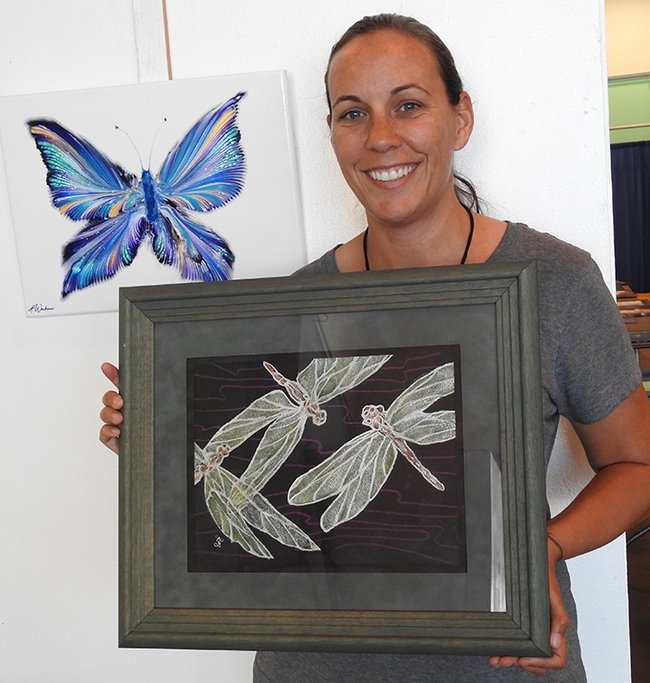
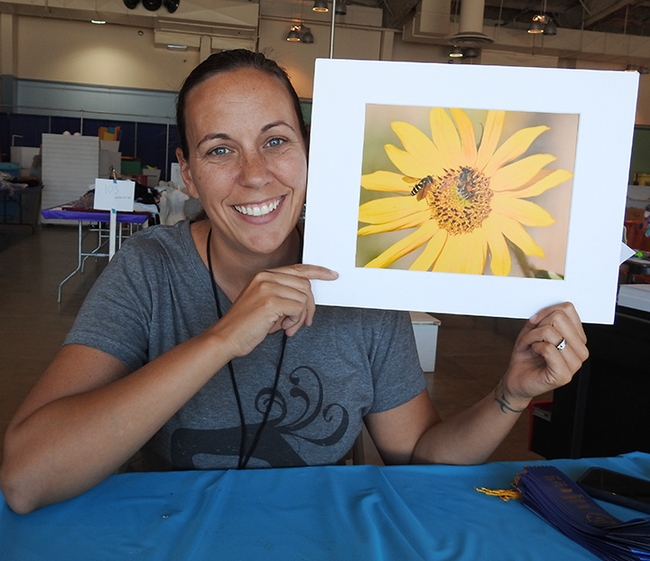
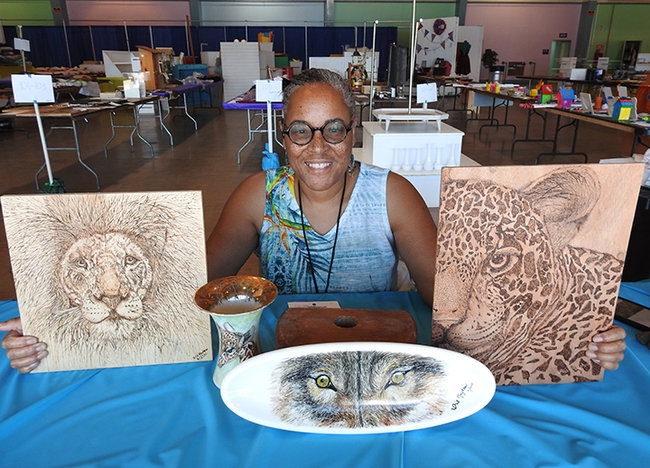
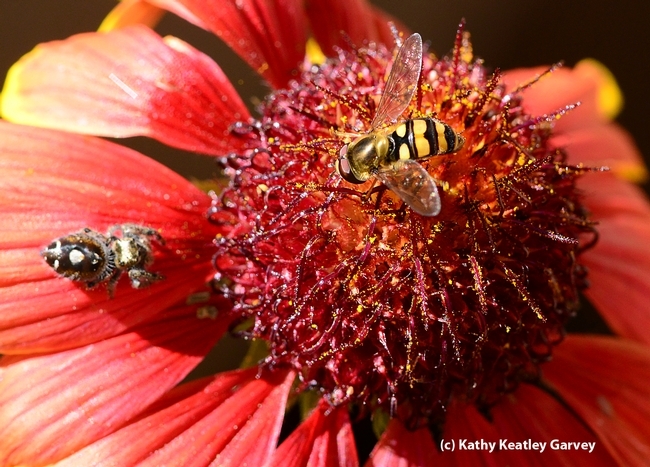
- Author: Kathy Keatley Garvey
It's always a good idea to carry your cell phone or shoulder a camera while you're taking a stroll through a garden.
You never know what you will see.
It was early morning on Tuesday, June 7, when we spotted a female Valley carpenter bee, Xylocopa sonorina, asleep on a passionflower vine, Passiflora. That's the host plant for the Gulf Fritillary, Agraulis vanillae, but carpenter bees are always hanging around for pollination. Tiny grains of golden pollen cling to this bee look like gold dust.
The females are solid black, while the males are a golden blond with green eyes. Sexual dimorphism. These bees are found in the Central Valley and southern California, Arizona, New Mexico and southward through Mexico, according to the late native pollinator specialist Robbin Thorp, UC Davis emeritus professor of entomology. He described them as "the largest of the carpenter bees in California."
Wikipedia indicates Valley carpenter bees are found from western Texas to northern California, and the eastern Pacific islands. Frederick Smith, assistant in the Zoological Department of the British Museum and member of the council of the Entomological Society of London, first described X. sonorina in 1874 from specimens collected in Hawaii, according to Wikipedia. "Until 1956, it was thought that X. sonorina came from the Sunda Islands, but in a paper published that year,M. A. Lieftinck showed that Smith's interpretation of the original specimen labels was in error: Smith had mistakenly read the label of X. sonorina as meaning the Sunda Islands instead of the Sandwich Islands."
"In 1899, R. C. L. Perkins described the same species as Xylocopa aeneipennis, and in 1922, P. H. Timberlake claimed that the Hawaiian Xylocopa was the same as the mainland X. varipuncta, that had been named in 1879, and Roy Snelling predicted in 2003 that X. varipuncta would eventually be reclassified as a synonym of X. sonorina," Wikipedia relates. "This was confirmed in 2020 using DNA analysis, and as the name sonorina has seniority, this is the valid species name."
Up until 2020, we'd always called them X. varipuncta.
This week we called one "sleepy head."
Ms. Valley Carpenter Bee finally stirred and soon after, took flight.
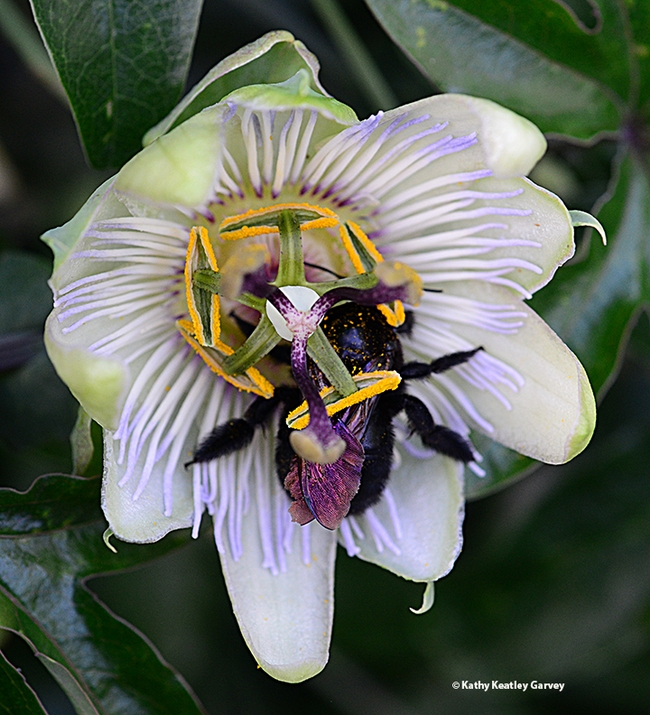
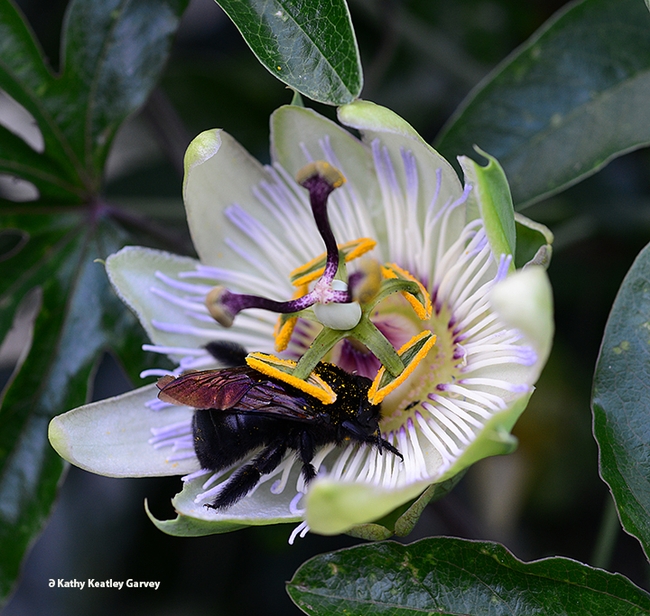
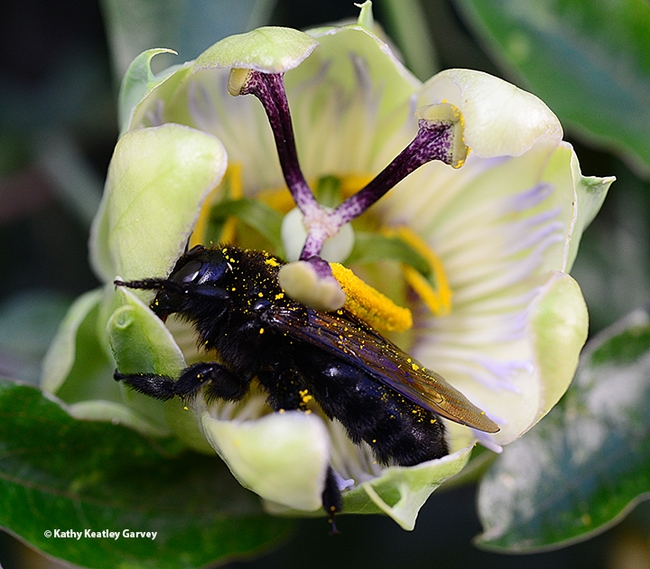
- Author: Kathy Keatley Garvey
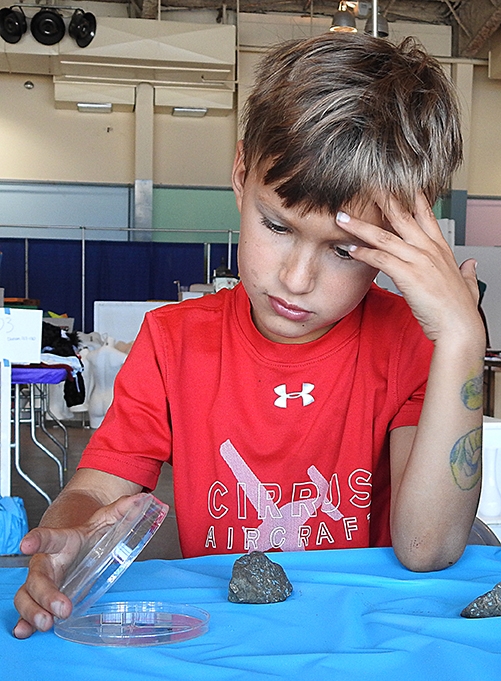
When you first meet Brandon DeGroot, 6, of Vallejo, he'll tell you "I love spiders and snakes" and he'll flash a big smile.
He's the kind of youngster that arachnologists, including Professor Eileen Hebets of the University of Nebraska and Professor Jason Bond, of the University of California, Davis, welcome to their fold.
Bond, associate dean of the College of Agricultural and Environmental Sciences, and the Evert and Marion Schlinger Endowed Chair in Insect Systematics, UC Davis Department of Entomology and Nematology, is chairing the American Arachnological Society's meeting June 26-30 at UC Davis with Lisa Chamberland, postdoctoral research associate, Department of Entomology and Nematology, and Joel Ledford, assistant professor of teaching, Department of Plant Biology, College of Biological Sciences.
An open house, "Eight-Legged Encounters," set from 1 to 4 p.m., Saturday, June 25 at the Bohart Museum of Entomology, will kick off the conference. Hebets is co-hosting it as part of a U.S. National Science Foundation grant, “Eight-Legged Encounters,” that she developed as an outreach project to connect arachnologists with communities, especially youth. It's free, open to the public, and family friendly.
The open house promises to be one of the biggest events--if not the leggiest!--of the year on the UC Davis campus and beyond. A powerhouse of arachnologists, Bond said, will be at the open house. “There will be everything--spider specimens, live arachnids, activities, artwork, etc."
Some 20 exhibits and activities will be set up in the hallway of the Academic Surge Building, said Tabatha Yang, the Bohart Museum's education and outreach coordinator. A popular activity at the Bohart is its live petting zoo, comprised of Madagascar hissing cockroaches or "hissers," stick insects and tarantulas. Youths, especially, delight in holding the hissers and stick insects.
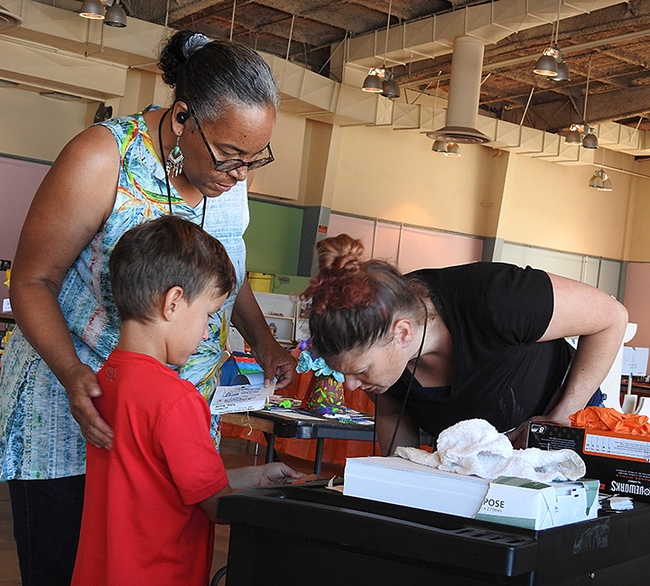
But back to Brandon.
"Brandon has always loved spiders, insects and snakes, starting when he was a toddler looking for bugs in our yard," said his mother, Heather DeGroot. "Brandon was always in the dirt, and my other son, Mason, now 8, was always in the grass." Last Tuesday, June 7, while Heather kept busy coordinating the Solano County Fair exhibits at McCormack Hall, in preparation for the June 16-19 fair, Brandon kept busy looking for critters outside. When he'd find one, he'd excitedly announce his treasure, and even more excitedly, show it to all.
So, in between his bug hunts, we thought we'd interview Brandon.
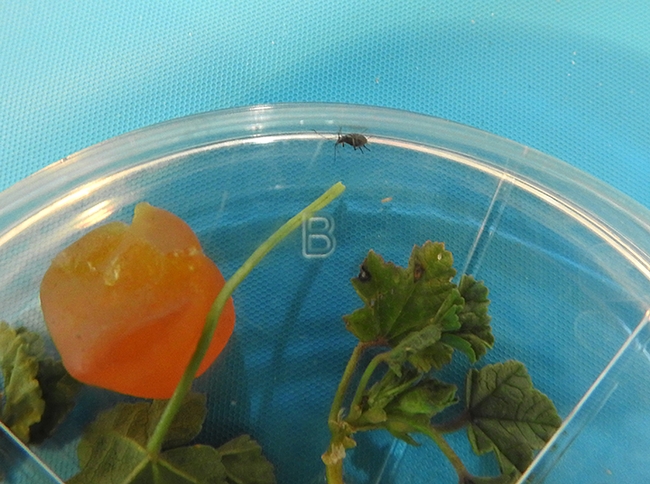
Brandon: "Brandon."
Bug Squad: "How old are you?
Brandon: "I'm six and I go to kindergarten at Vallejo Charter School. I'm almost in the first grade." (He graduated from kindergarten June 9.)
Bug Squad: "Brandon, how long have you loved spiders and snakes?"
Brandon: "A long time."
Bug Squad: "Cool! Why do you love spiders?"
Brandon: "I like the poison and how they eat."
Bug Squad: "What do you want to be when you grow up, Brandon?"
Brandon: "I want to be a scientist about animals. See my snake tattoo on my arm?" (He displayed the washable tattoo that tattoo artist Jason Meyers of Concord created just for him.)
Bug Squad: "Fantastic! What makes you happy?"
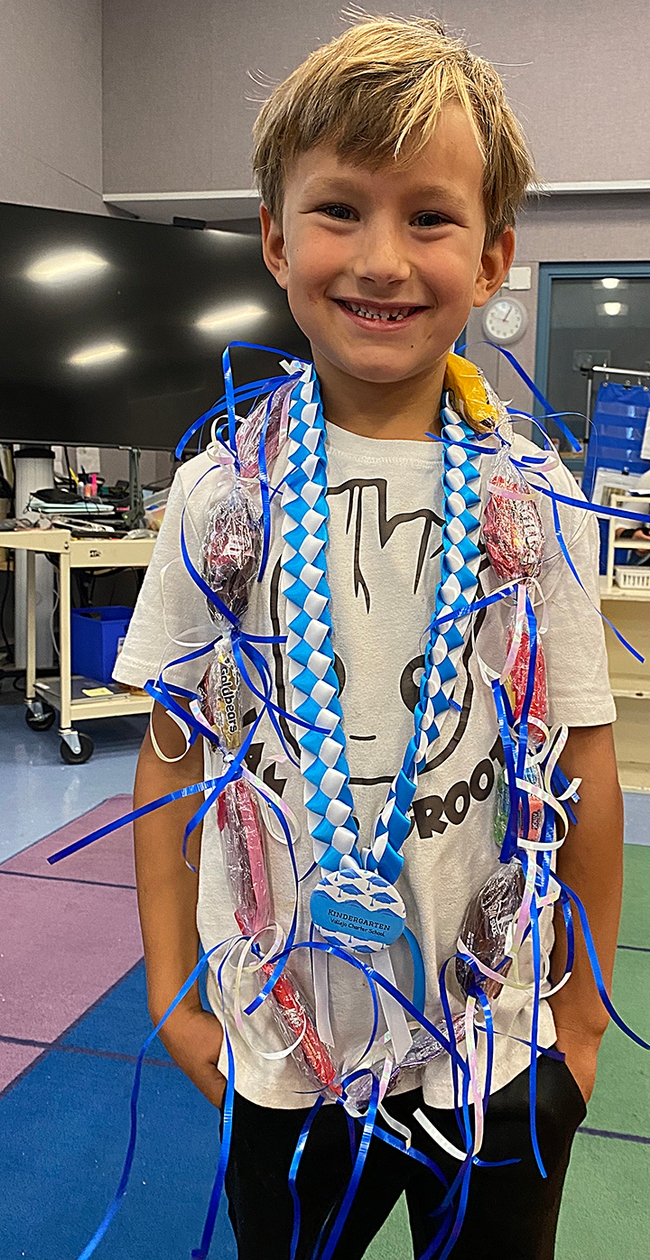
Bug Squad: "Does your brother Mason like snakes and spiders?"
Brandon: "No, he only likes BMX." (Mason will be competing as part of Team USA at a BMX competition in Nance, France in July. The entire family will be there to support him.)
Bug Squad: "Why doesn't Mason like spiders and snakes?"
Brandon: "He doesn't want to get hurt by them."
Bug Squad: "Do you like bees?"
Brandon: "I like bees. They pollinate the flowers and make them change colors. I like ladybugs and I like letting them crawl on me. I like walking sticks. I saw them on YouTube and they look just like sticks."
Bug Squad: "Do you like ants?"
Brandon: "I like ants but I don't like fire ants." (He sees fire ants on family trips to Houston, Texas.)
Bug Squad: "Do you like butterflies?"
Brandon: "I like them because of their colors."
Bug Squad: "Do you like dragonflies?"
Brandon: "I like how fast they fly and they nibbled on my family at the Yuba River but they didn't nibble on me."
Bug Squad: "Brandon, do you like sports or play sports?"
Brandon: "I played basketball and I'm going to learn to play tennis."
Bug Squad: "Do you like girls?"
Brandon (raising his eyebrows): "No, I like dogs."
Bug Squad: "Do you have a dog?"
Brandon: "No."
Bug Squad: What's your favorite food?"
Brandon: "Strawberries and chocolate."
And with that, he opened his lunch box, picked out a strawberry, and shared it with a bug that he had just collected in the McCormack Hall gardens.
"Here you go," Brandon told the bug, later identified by Lynn Kimsey, director of the Bohart Museum of Entomology, UC Davis, as an aphid. "I'm feeding you so you won't get hungry."
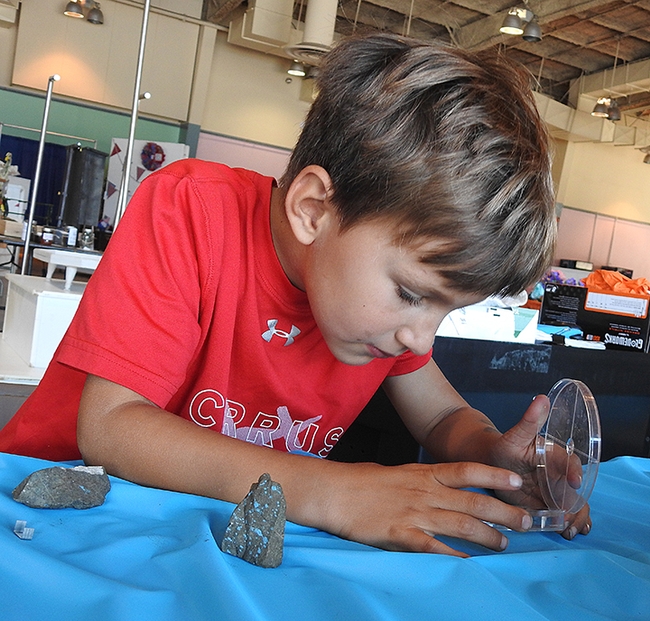
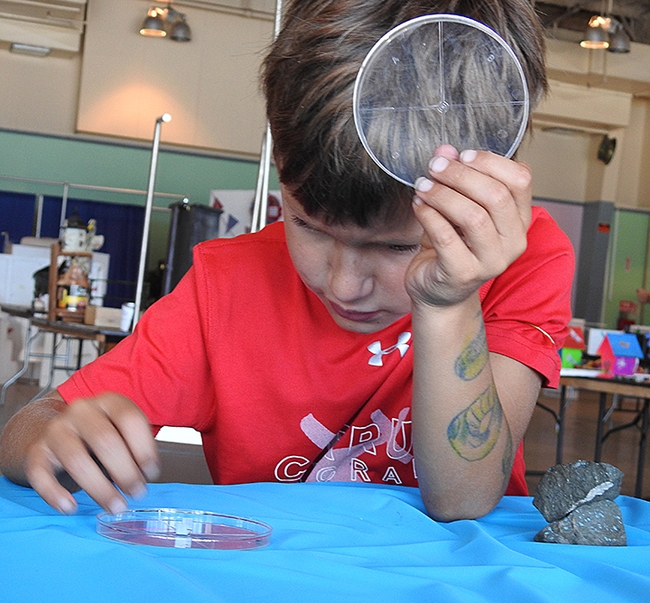
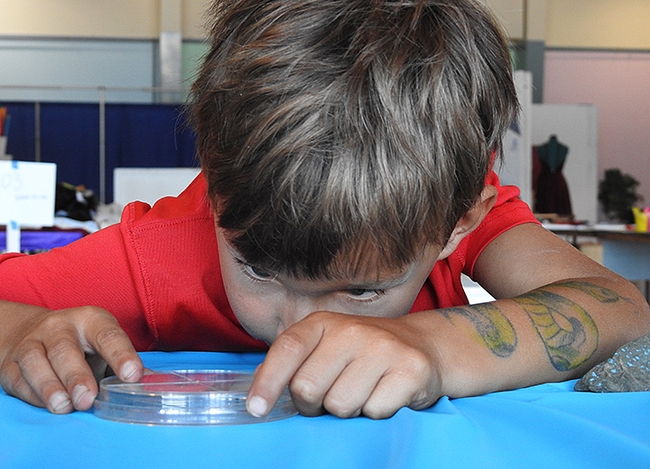
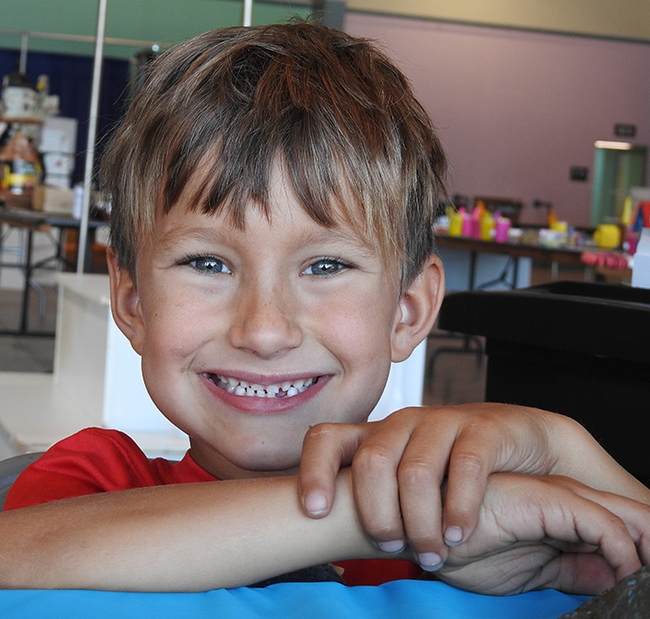
- Author: Kathy Keatley Garvey
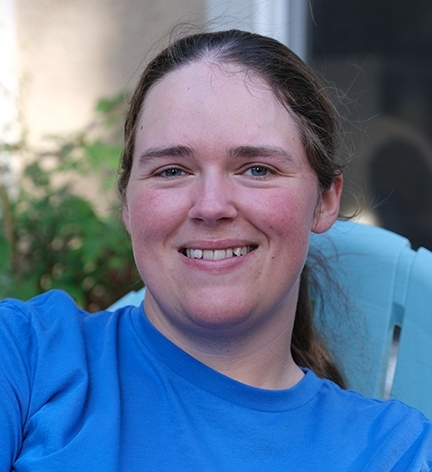
Newton, a first-generation college student, studies with Professor Jason Bond, associate dean, College of Agricultural and Environmental Sciences, and the Evert and Marion Schlinger Endowed Chair in Insect Systematics, UC Davis Department of Entomology and Nematology.
Her dissertation focuses on species delimitation in two trapdoor spider groups, Antrodiaetus unicolor complex and Aptostichus icenoglei sister species complex, and evaluation of interspecific relationships within the genus Aptostichus. She covered two chapters of her dissertation in her exit seminar.
What sparked her interest in spiders? “I actually used to be terrified of spiders,” Lacie acknowledged. “It wasn't until fall semester of my sophomore year when I took a zoology course that I began to appreciate not only the vast amount of diversity within spiders but also how amazing they are as a group, such as the tensile strength of spider silk being comparable to steel, spider venoms playing a role in potential medical applications, and a myriad of feeding strategies, etc..”
Born and raised in Eupora, Miss., Lacie received her bachelor of science degree in biological sciences from Millsaps College in 2016 and then enrolled in the graduate school program at Auburn University, Alabama, studying with Professor Bond. When he accepted the Schlinger Endowed Chair in Insect Systematics in 2018, Lacie, along with other lab members, transferred to UC Davis.
Her research on folding-door spiders or the Antrodiaetus unicolor species complex led to a journal article published in Molecular Ecology: “Integrative Species Delimitation Reveals Cryptic Diversity in the Southern Appalachian Antrodiaetus unicolor (Araneae: Antrodiaetidae) Species Complex.” UC Davis co-authors are Professor Bond, who is the Evert and Marion Schlinger Endowed Chair in Insect Systematics, and project scientist James Starrett of the Bond lab.
Newton is active in both the American Arachnological Society (AAS) and the Society of Systematic Biologists. She won a second-place award for her oral presentation on species delimitation at the 2019 AAS meeting, held at Washington and Lee University, Lexington, Va.
At UC Davis, Newton served as a teaching assistant for the “Introduction to Biology: Biodiversity and the Tree of Life” course. Her resume also includes:
- mentoring undergraduate students in the Mentoring Program, Equity in Science, Technology, Engineering, Math, and Entrepreneurship (ESTEME) organization, a graduate student organization dedicated to improving equity and inclusion in STEM fields, entrepreneurship, and leadership positions.
- volunteering on the admissions committee for GOALS, the Girls' Outdoor Adventure in Leadership and Science, a summer science program for high school students to learn science hands-on while backpacking through the wilderness.
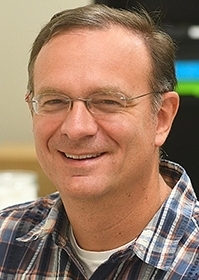
A "powerhouse" of arachnologists will participate at the open house and conference, said conference chair Bond. Hosting the conference with him are Lisa Chamberland, postdoctoral research associate, Department of Entomology and Nematology, and Joel Ledford, assistant professor of teaching, Department of Plant Biology, College of Biological Sciences.
Professor Eileen Hebets of the School of Biological Sciences, University of Nebraska, Lincoln, is co-hosting the open house as part of a U.S. National Science Foundation grant, “Eight-Legged Encounters” that she developed as an outreach project to connect arachnologists with communities, especially youth.
Some 20 exhibits and activities will line the hallway of the Academic Surge Building, said Tabatha Yang, the Bohart Museum's education and outreach coordinator. “There will be everything--spider specimens, live arachnids, activities, artwork, etc.," Bond related.
UC Davis distinguished professor Lynn Kimsey directs the Bohart Museum, home of eight million insect specimens, a live "petting zoo" (think Madagascar hissing cockroaches, stick insects, and tarantulas) and a gift shop stocked with insect-themed treasures, from t-shirts to books to jewelry.
Another highlight of the AAS conference will be a series of public lectures, aimed for both novices and experts alike, on Tuesday, June 28, from 7:30 to 9, in the newly constructed 600-seat lecture hall, located in the campus core. The event is free and open to the public.
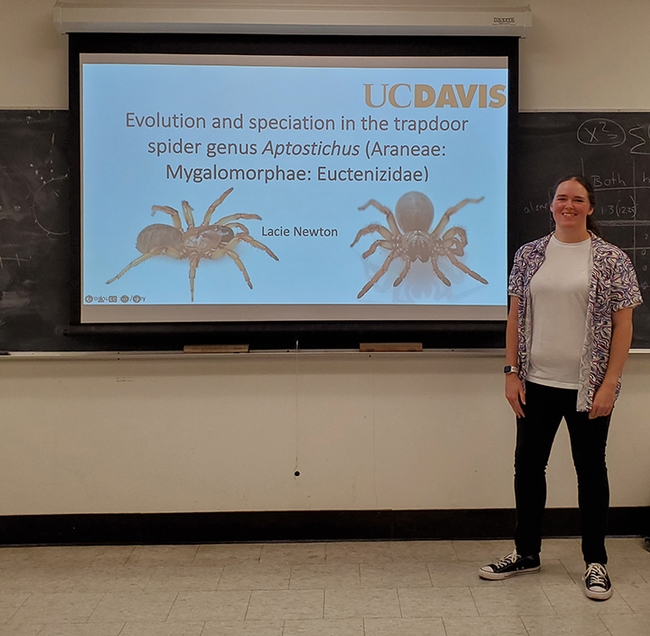
- Author: Kathy Keatley Garvey
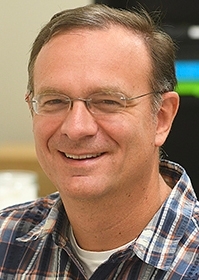
A free, public open house on “Eight-Legged Encounters,” featuring spiders and other arachnids, promises to be one of the biggest events--if not the leggiest!--of the year on the UC Davis campus and beyond.
The event, set from 1 to 4 p.m., Saturday, June 25 in the Bohart Museum of Entomology, Academic Surge Building, Crocker Lane, will officially kick off the 2022 American Arachnological
A "powerhouse" of arachnologists will be participating, said Jason Bond, associate dean, College of Agricultural and Environmental Sciences, and the Evert and Marion Schlinger Endowed Chair in Insect Systematics, UC Davis Department of Entomology and Nematology. He will be hosting the conference with Lisa Chamberland, postdoctoral research associate, Department of Entomology and Nematology, and Joel Ledford, assistant professor of teaching, Department of Plant Biology, College of Biological Sciences.
“There will be everything--spider specimens, live arachnids, activities, artwork, etc.," Professor Bond said.
Some 20 exhibits and activities will be set up in the hallway of the Academic Surge Building, said Tabatha Yang, the Bohart Museum's education and outreach coordinator.
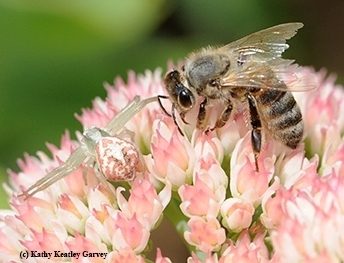
Through the NSF grant, awarded in 2013, Hebets seeks to educate the public “about the wonders of biology and the possibility of scientific discovery using a charismatic and engaging group of animals--arachnids. Arachnids (spiders and their relatives) are ubiquitous, thriving in most habitable environments on our planet (including underwater),” Professor Hebets writes on her website at https://hebetslab.unl.edu/
“As a scientist, a mother, and an educator, I often see the disconnect between youth and the world around them; between problem solving skills, observation skills, critical thinking, natural curiosity and the more traditional formal teaching programs experienced by many students,” she writes. “Youth are innately curious and tremendously creative and my aim is to leverage these traits for their own educational advancements in a fun and engaging manner.”
To date, Hebets and her collaborators have developed more than 25 modular activity stations “encompassing arts and crafts, experiments, games, and other hands-on activities." They include classification and taxonomy, spiders and silk, path of predators, and hands-on science.
Also at the open house, plans call for “A Name that Spider" event, coordinated by postdoctoral fellow Lisa Chamberland and PhD students Iris Bright and Emma Jochim of the Bond lab. “We'll have an exhibit at the event with details on the spider,” Bond said. “We'd like to restrict naming suggestions to be youths attending the event, students 18 years and younger."
Another highlight of the American Arachnological
